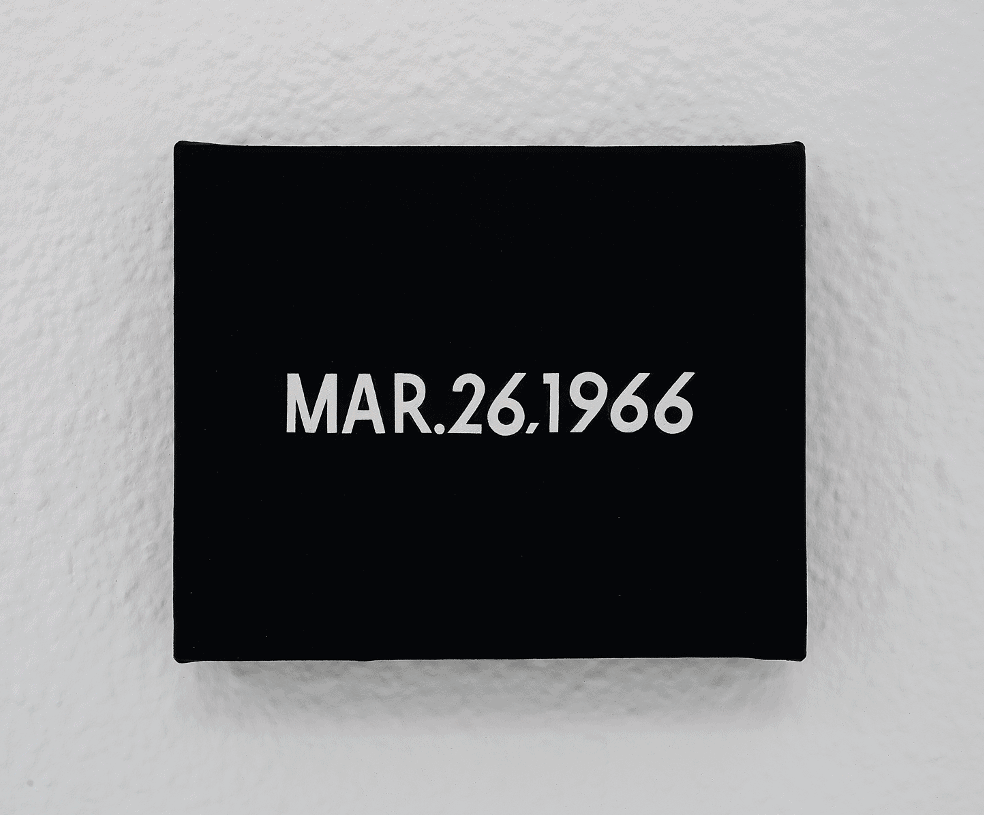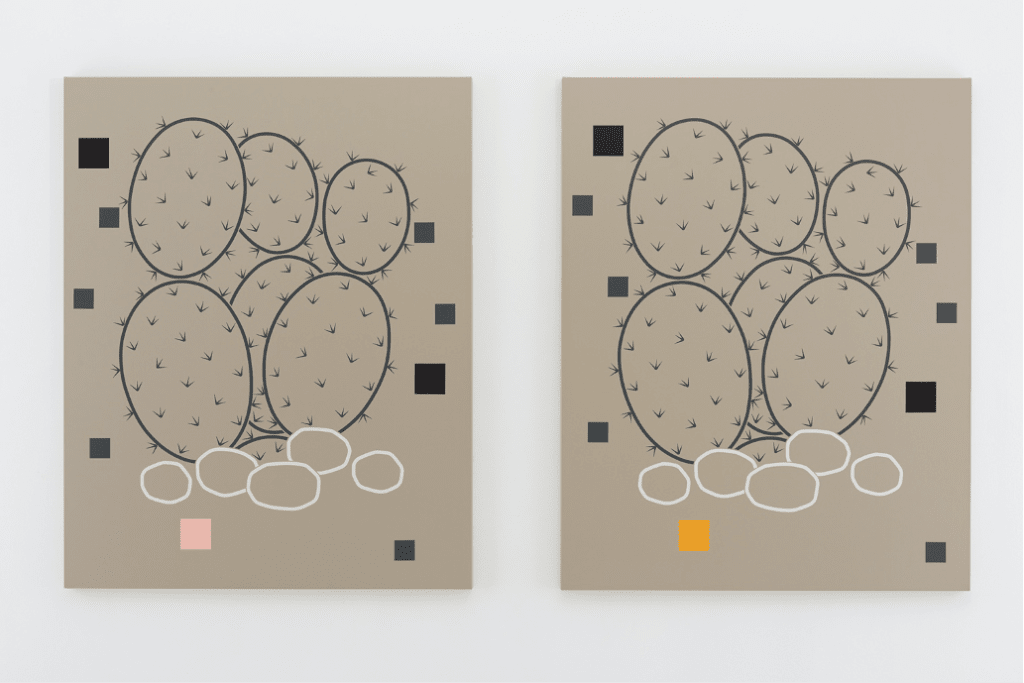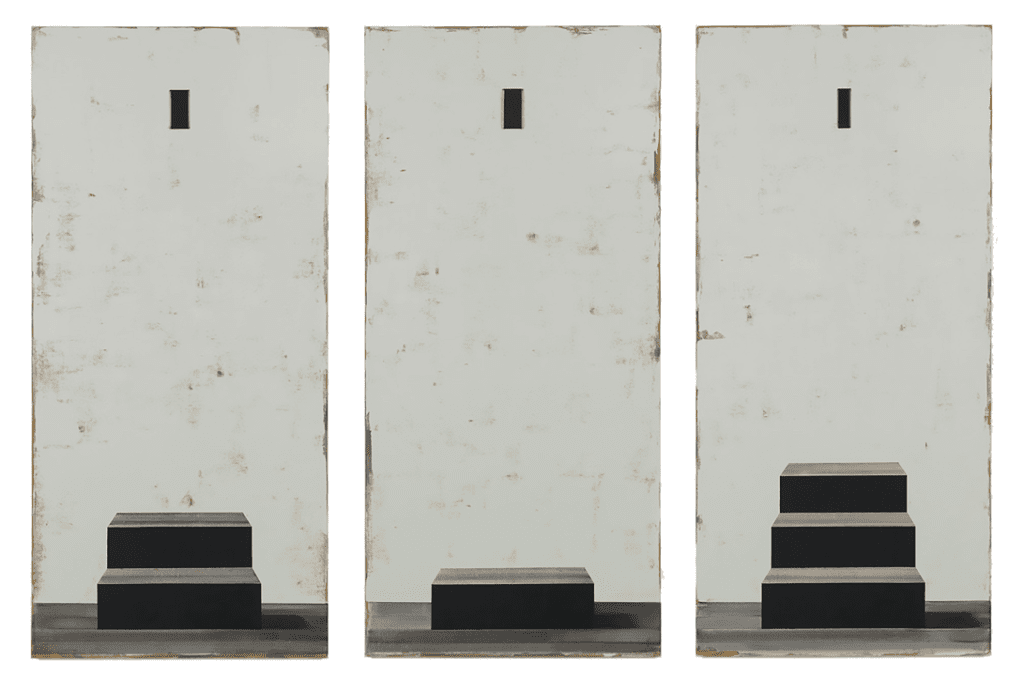
Mark-Making: 5 Abstract Painters You Need To Know
Trends in Contemporary Art
Cross Lane Projects invited our artistic director Julien Delagrange to write an essay on conceptual painting and post-conceptual figurative painting for the exhibition catalog of the group exhibition High On Hope. The show features a selection of works by Mark Fairnington, Gerard Hemsworth, Roy Holt, Rebecca Scott, Bob & Roberta Smith, Michael Stubbs, Jessica Voorsanger, Mark Wallinger, and Suzy Willy.
The exhibition runs from July 23 until September 24, 2022, at Cross Lane Projects in Kendal, the United Kingdom (see installation view above; High On Hope, Installation view at Cross Lane Projects, 2022. Image by Mark Woods).
Discover more here.
With the arrival of Minimal Art and Conceptual Art in the 1950s and 1960s, an ongoing tendency towards abstraction and the liberation of academism and artistic dogmas reaches a culmination point. According to many art critics, the end of Modernism would also mean the end of painting.[1]
The concept or idea became superior to craftsmanship, beauty, or traditional artistic media, resulting in a Copernican Revolution of postmodern art movements—think of Installation Art, Land Art, Arte Povera, Fluxus, Feminist Art, Environmental Art, and more. A new type of artist was born who can be described as a (neo/post-)conceptual multidisciplinary artist working across various media, think of photography, video, installation, sculpture, performance, and also — but rarely — painting.
Conceptual painting consists of the use of painting during the historical art movement of Conceptual Art. Here, painting is implemented into a conceptual artistic practice in which the idea of the artworks is superior to the actual execution of the artwork itself.
The art object is merely a vehicular medium to transfer the idea from the mind of the artist to the mind of the viewer. Think of the date paintings by On Kawara (1932-2014) titled Today, in which the Japanese artist depicted the date according to the conventions of the country in which they were created for almost five decades, exploring the concept of time and the documentation of time.
Here, painting becomes a natural ally for Conceptual Art with text paintings. Written language is not only a key characteristic of Conceptual Art, but it is also its genesis. The term originated in the 1960s in the United States of America when Fluxus artist Henry Flynt wrote about a new art movement he referred to as ‘Concept Art’ in 1961.[2] A movement in which art consisted of language, and the idea was superior to anything else.


Influenced by the Structuralism of Claude Lévi-Strauss (1908-2009) and Jacques Lacan (1901-1981), artists examined language as a structural element for meaning. This often-linguistic game of the signified and the signifier culminated in changing the semiotics of art radically and ingeniously. Doing so, the emergence of text-paintings was a natural conclusion. The artwork was the textual content and the idea, and painting was reduced to being merely a surface, as is the case with On Kawara’s iconic series.
However, with the text-based paintings by Alighiero Boetti (1940-1994) or Mel Bochner (b. 1940), the role of painting was not reduced to the necessity of having a surface. Painting becomes an object once more, with the medium’s characteristics being reborn.
For instance, with Mel Bochner, the expressive nature of the writing of the artist becomes very present, with color and composition being reinstated. Mel Bochner was a true pioneer of Conceptual Art, but with his painterly practice, the visual and affective impact contrasts strongly with the rather cool, analytic, and lifeless visual language of Word Art from the 1960s and 1970s.[3] He reembraces paintings’ so-called seductive qualities, enchanting the viewer with its sensuous brushstrokes and a powerful punch of color.
Whereas Conceptual Art at first seemed to have kicked painting out of the front door as an obsolete art form—often criticized as the medium par excellence as decoration for the wealthy[4]—Word Art and text-paintings made painting reenter the building using the backdoor.
From a dialectic perspective, one might argue Conceptual Art and figurative painting are diametrically opposed. The first is marked by the use of innovative media and pushing the boundaries of the definition of art, whereas the latter is defined by craftsmanship and rooted in tradition. Figurative painting has a somewhat obsolete ring to it. As if it is a reactionary and nostalgic act by the artist, destined to fail in a post-conceptual era.[5] But, as with painting in general, why would it be impossible for a figurative painting to have a conceptual foundation?
Abstract painting did not experience this struggle when Conceptual Art emerged in the 1960s. Abstract Expressionism was in its heyday — the gestural with Jackson Pollock (1912-1956) and fields of color with Mark Rothko (1903-1970) — followed by Post-Painterly Abstraction and Op Art. Abstraction was still seen as the pinnacle of innovative and high art. Visually influenced by Minimal Art, abstract painting was much more connected to Conceptual Art. Think of Daniel Buren’s (b. 1938) 8.7 cm wide vertical stripes in relation to Hard Edge and Op Art painters such as Bridget Riley (b. 1931).
But figurative painting did not have such a visual connection with the up-and-coming postmodern art movements. And if Conceptual and Minimal Art were the future, then figurative painting must have been of the past? Figurative painting survived through Pop Art — albeit strongly connected to what was seen as ‘lower’ art forms such as illustration or printmaking. In the 1960s, Photorealism emerged as a new movement for figurative painting. However, it was not at all a revival of the representational possibilities in painting; on the contrary. Photorealism proved there was no future for figurative painting if the objective was mimesis, courtesy of photography and film.[6]
Conceptual Art redefined the semiotics and expectations of art, and this applied to painting as well. So, with post-conceptual painting, the next step was not a counter-reaction, but a new synthesis. And a series of artists succeeded in finding this new synthesis.

For instance, let us stay with text-based paintings first. The Numbers series from 2020 by the Belgian pictor doctus Luc Tuymans (b. 1958)—a figurative painter pur sang—does have a visual connection with the aforementioned On Kawara or Mel Bochner.
Tuymans painted white numbers with his characteristic nervous brushstrokes on a monumental and dark backdrop in times of covid, implementing the artistic tradition of text-paintings from the conceptual era into his predominantly figurative oeuvre. The numbers symbolize the importance of statistics during the pandemic—the number of cases, hospitalizations, and deaths. Enhanced by the size of the numbers, they symbolize people, life, and death. Adding up, but also counting down.
The numbers are abstract, and simultaneously representational or universal, balancing on the intersection of Conceptual Art and contemporary figurative painting. The interesting thing is, however, visually, it is much more convenient to discover the conceptual foundation of these specific works by Luc Tuymans, even though his approach, methodology, and conceptual undercurrent in his works are completely the same as with his figurative works. From landscape painting to portraiture, or still life painting up to history painting.
Another example can be found with Gerard Hemsworth (1945-2021), who—unlike Luc Tuymans—experienced the emergence of Minimal and Conceptual Art firsthand. Having worked with text, Hemsworth examined how images could operate similarly to text. His drawings from the late 1970s use a combination of both, merging the conceptual with the representational in a single picture.
The British artist aimed to present a subtle contradiction for the viewer to work with, resulting in new analogies for meaning. Eventually, the text would disappear entirely. Recurring motives and shapes mark his works—think of cactuses, stones, squares, grids, and more—cartoon-like figures and an utmost recognizable visual language.
The conceptual approach of Hemsworth presents seemingly innocent or simple paintings. However, the familiar is accompanied by contradictions, resulting in a necessary critical engagement towards not only the painting in question but art in general, both for the viewer and for the artist.
With the Three Graces Twice from 2012, Hemsworth depicts three cactuses but associates them with our collective art historical memory, referencing directly to the three graces. Are we confronted by three cactuses or by three graces? Even more, why do we see them twice? The paintings appear to be exact copies, but they are not, rearranging two squares at the left and altering the color of the square at the bottom.

This brings us to another key characteristic of Conceptual Art[7] and post-conceptual painting; its self-conscious character. Hemsworth did not only question the contradictions in his pictures; he questioned art and our perception of art in general by presenting these contradictions. As with the aforementioned Daniel Buren, but also with, for instance, Dan Graham (b. 1942), Marcel Broodthaers (1924-1976), or Hans Haacke (b. 1936), art is questioned by the manner of art, examining its very own reality, truth, practice, and existence—under the looming influence of postmodern literature.
A great example can be found with the painter’s painter Michaël Borremans (b. 1963). At first glance, we are mesmerized by his virtuoso brushstrokes reminiscent of Baroque masters such as Diego Velázquez (1599-1660) or Caravaggio (1571-1610). One would intuitively argue these paintings are the artistic counterparts of conceptual installation artworks; however, the opposite seems to be true.

Borremans approaches painting as an anachronism, effectuated by the discrepancy between his baroque visual language and its strongly conceptual subject matter. In doing so, the artist continuously refers to the medium of painting, questioning it as a simulacrum or even as a (beautiful) lie. He presents an absurd and unsolvable conflict marked by a strong conceptual foundation.
Even more, sometimes, the artist directly references to Conceptual Art. Think of Girl Eating from 2014, in which he depicted the subject as if she is eating her hand, a quip reference to Vito Acconci’s famous Adaptation Studies from 1970 in which he puts his hand in his mouth.
With Michaël Borremans, the aesthetics are rooted in tradition, but the subject matter is marked by post-conceptualism. In other cases, both can be post-conceptual. The postmodern art movements had freed the artist from the so-called dictatorship of beauty, but this does not imply an artwork had to be aesthetically unpleasant. In fact, many conceptual and minimal artworks are very aesthetically pleasing.
A great example can be found in the beautiful arrangements using chairs, frames, mirrors, or even trumpets by Jan Vercruysse (1948-2018). These new and minimal aesthetics did not only find their way into abstract painting—think of Mary Corse (b. 1945) or Agnes Martin (1912-2004)—but also into figurative painting. The aforementioned Gerard Hemsworth opts for a very clear and stylized visual language, and even the Caravaggesque paintings by Michaël Borremans are influenced by Minimalism when it comes to composition.
A more clear-cut example can be found in the works by Michael Simpson (b. 1940). As with Jan Vercruysse, Simpson aesthetically arranges objects, most often ladders, steps, benches, or plinths. Instead of using the gallery space as the setting and actual objects, his space is the canvas, and his objects are painted. Visually, with Simpson, it feels as if we are watching exhibition views of conceptual artworks as if they painted installations.
With Squint Triptych from 2016, we see three types of steps on a grey floor against a white wall. A characteristic presentation of the clean and minimal aesthetics rooted in Installation Art. The arrangement is a painterly realization of a conceptual artwork, so it seems.[8]

Post-Conceptual painting refers to all painting with a conceptual foundation, after the historical era of Conceptual Art up to this very day (ca. 1970-today).
It is to say, Post-Conceptualism, in general, builds upon the legacy of Conceptual Art. This notion might be most clear with the works of—for instance—Tracey Emin (b. 1963) or Anish Kapoor (b. 1954), due to their multidisciplinary practice marked by installation and contemporary sculpture.
But with painting, we are more likely to make associations with Old Masters or modern painters than with their conceptual contemporaries. This a problematic pitfall and a key misconception one must address, as painting in a post-conceptual era are most often much closer to Joseph Kosuth (b. 1945) than to Claude Monet (1840-1926). At least, if one is able to look beyond the medium and inspect the content of the artwork — which is exactly what the aforementioned artists are aiming to evoke with the viewer.
To conclude, we return to our dialectic perspective on Conceptual Art and figurative painting. From a supposedly reactionary tendency, we arrive at a new synthesis. Post-conceptual figurative painting is a subtle niche in contemporary painting, catching our eyes with the paint’s seductive qualities and stimulating the mind with its wit and conceptual foundation.
Notes:
[1] Douglas Crimp, “The End of Painting” in October 16 (1981): p. 69-86.
[2] Henry Flynt, “Concept Art” in An Anthology. New York: La Monte Young, 1963.
[3] Ken Johnson, “Secret Power of Synonyms” in The New York Times (May 2, 2014): p. 21.
[4] Daniel Marzone, Conceptual Art. Taschen: 2005.
[5] The post-conceptual era refers to the historical period of Post-Conceptual Art, consisting of all art after, and influenced by, the historical art movement of conceptual art, up to this very day (ca. 1970-today). Post-conceptualism builds upon the legacy of Conceptual Art, in which the concept or idea is superior to traditional aesthetics of the selected medium.
[6] Jerry Saltz, “The Richter Resolution” in Modern Painters (April 2005): p. 28-29.
[7] The first being the superiority of the concept or idea of the artwork, the second being the use of language in the form of text.
[8] Julien Delagrange, Apologia. (Kortrijk: CAI, 2021) p. 23.
Last Updated on July 5, 2024

Trends in Contemporary Art

A Complete Guide

Touching the Invisible

A Reasoned Anthology